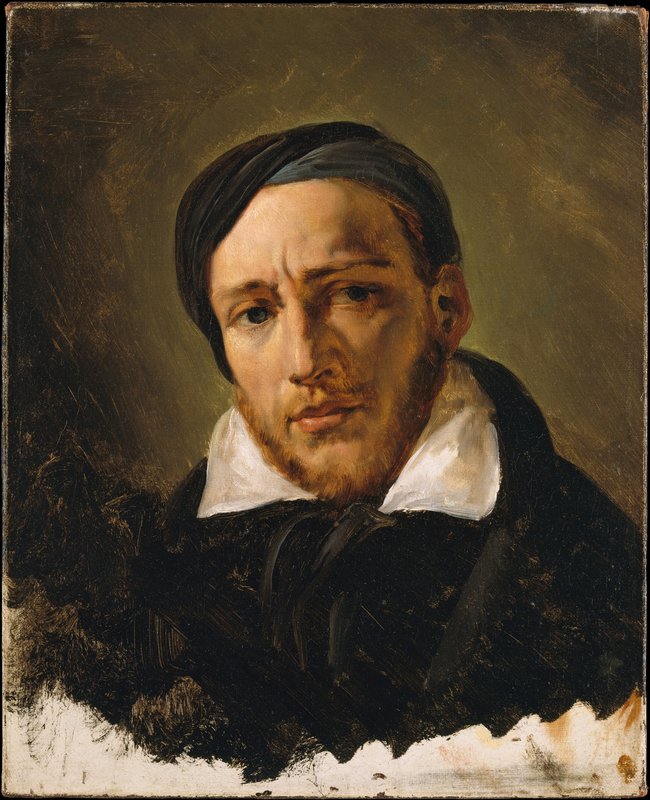
1791–1824
Movements
Occupations
Théodore Géricault (1791-1824) stands as one of the most influential pioneers of French Romanticism, despite a career tragically cut short at age thirty-two. Born in Rouen on September 26, 1791, into a wealthy family, Géricault's brief but intense artistic life transformed the trajectory of nineteenth-century European painting. Géricault began his formal training in 1808 under Carle Vernet, mastering the English sporting art tradition and developing exceptional skill in depicting horses and dynamic movement. He continued his studies from 1810 under the academician Pierre-Narcisse Baron Guérin, learning classical composition and figure construction. However, Géricault found the prevailing Neoclassical style limiting and spent formative years at the Louvre (1810-1815) copying masterworks by Rubens, Titian, Velázquez, and Rembrandt, discovering a vitality absent from academic conventions. His artistic significance crystallized with The Raft of the Medusa (1818-1819), a monumental canvas depicting survivors of a notorious shipwreck caused by governmental incompetence. This masterpiece bridged Neoclassicism and Romanticism, combining classical figure construction with unprecedented emotional intensity and contemporary subject matter. Initially rejected by French authorities for its political implications, the painting achieved international acclaim in England and established Géricault as a revolutionary force in European art. His earlier works, including The Charging Chasseur (1812) and Wounded Cuirassier (1814), already demonstrated his commitment to portraying modern military subjects with dramatic power. Géricault's style synthesized seemingly contradictory elements: classical training with Romantic passion, idealized forms with brutal realism, monumental scale with intimate psychological insight. His technique featured dynamic compositions, dramatic contrasts of light and shadow, and vigorous brushwork that conveyed immediacy and emotional force. He rendered human figures in powerful, superhuman proportions reminiscent of classical sculpture, yet imbued them with contemporary urgency and psychological depth. During his English sojourn (1820-1822), Géricault pioneered innovative lithographic techniques and created watercolors of horses and jockeys. Upon returning to France, he produced his most psychologically penetrating works: ten portrait studies of psychiatric patients (1821-1823), exploring conditions including obsessive envy and kleptomania with remarkable sensitivity and dignity. Géricault's legacy profoundly shaped the Romantic movement's development. He directly influenced Eugène Delacroix and subsequent generations who embraced emotional intensity, contemporary subjects, and psychological complexity. His fusion of classical monumentality with Romantic drama established new possibilities for history painting. A passionate horseman, Géricault died in Paris on January 26, 1824, from complications of riding accidents and tuberculosis, leaving an indelible mark on art history despite his abbreviated career.
Wikidata/Wikimedia Commons